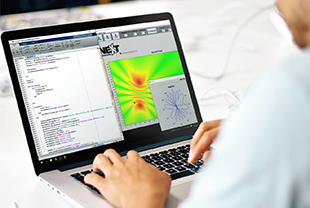Next-proaudio’s Acoustical Simulation Tool (AST) software offers 2D modelling of the company’s single subwoofer sources and sub-arrays.
 Through an intuitive and easy-to -use interface, the AST software has been designed to help Next-proaudio system users when setting up subwoofers in a venue. Based on a very fast and accurate algorithm, it is capable of predicting the acoustical performance of the subwoofers, helping to identify the optimum solution for a given venue with a multiple sound sources. The software supports simulation of 11 ISO 266 spacing frequencies (20Hz-200Hz).
Through an intuitive and easy-to -use interface, the AST software has been designed to help Next-proaudio system users when setting up subwoofers in a venue. Based on a very fast and accurate algorithm, it is capable of predicting the acoustical performance of the subwoofers, helping to identify the optimum solution for a given venue with a multiple sound sources. The software supports simulation of 11 ISO 266 spacing frequencies (20Hz-200Hz).
AST includes a database of Next-proaudio subwoofer models, containing sensitivity, maximum power and cabinet dimensions. After adding, a sound source within project can be easily modified by clicking on the top and setting several different parameters – orientation and vertical stack (up to four units), and electronic parameters including polarity, delay and gain. The gain value can be calculated according to the feeding amplifier power. Taking into account humidity, temperature and altitude, the speed of sound is calculated in order to achieve the maximum phase coherence. The resultant coverage simulation is mapped using Jet-colour graphics with the SPL distribution throughout the venue.
With a listening point, as known as a probe or ‘virtual microphone’, users can predict the frequency and phase response in a desired location. AST provides up to four listening points simultaneously. A Polar plot function indicates how far the virtual measure will be taken, and Q, DI and -6dB angle displayed in a separate window.
Set-up times and calculation errors can present obstacles to inserting subwoofer arrays into a loudspeaker system. In response, AST provides a function called Insert Array that enables customisation of an array with only a few mouse clicks.
Setting up a subwoofer Virtual Arc can also be a difficult and time-consuming task – however, this is an easy job for AST users. Based on the acoustical beam aperture (0°-90°), a provided function called Virtual Arc does all the complex calculations and presents the needed data (sub location and delay) to include in DSP audio processor setting. Virtual Arc is an important and useful feature, as it automatically calculates the subwoofer delays to make a virtually arched array with the desired directivity.
More: www.next-proaudio.com



